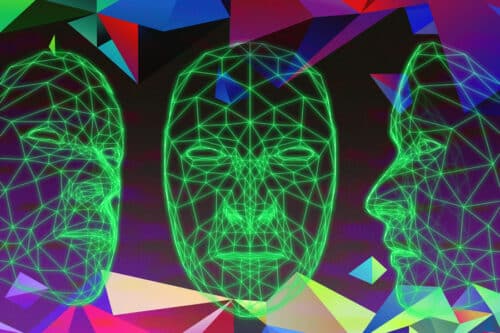Researchers at MIT have reported that the regime employs AI-powered facial recognition technology to suppress dissent while advancing its capabilities in China.

Credits:Image: Jose-Luis Olivares/MIT with figures from iStock
Many scholars, analysts, and observers posit that the reluctance to embrace innovation represents a significant vulnerability for authoritarian regimes. These governments often need help to adapt to technological advancements that aid their adversaries. Moreover, their suppression of rights can impede innovative economic endeavours and undermine the overall long-term prospects of the nation.
Researchers at MIT have revealed that China’s government employs AI-based facial recognition technology to stifle dissent, successfully quelling protests while inadvertently fueling the development of improved Artificial Intelligence (AI) tools and software. In regions of China experiencing higher levels of unrest, the government tends to procure more facial recognition AI, mainly through local government units like municipal police departments. The researchers term this phenomenon an “AI-tocracy,” a cycle where expanded use of AI-driven technology suppresses dissent while enhancing the nation’s innovation capabilities.
The scholars collected evidence spanning a decade for their study. The findings revealed a substantial increase in local government procurement of facial recognition AI services and high-resolution video cameras following public unrest in the respective areas. The researchers have examined the relationship between weather conditions and protest activity in different Chinese regions. They found that weather conditions had less influence on unrest in prefectures with substantial investments in facial recognition technology than in areas without such investments. The scholars also considered factors like wealth disparities but concluded that facial recognition technology deployment was a response to past protests, reducing future protest levels.
The researchers also examined the impact of increased demand for AI on China’s technology sector, revealing that the government’s expanded use of facial recognition tools propels the country’s tech industry. Data from China’s Ministry of Industry and Information Technology suggests that AI-driven tools do not hinder other forms of high-tech innovation. Overall, the case of China exemplifies how autocratic governments can leverage technological advancements to strengthen their political power instead of being undermined by them. The research findings have implications for government types and economic growth. This study identifies a pathway through which authoritarian governments can generate more growth. It suggests the coexistence of autocratic institutions and economic development.
The scholars are further investigating related aspects of the issue, including the extent of China’s global export of advanced facial recognition technologies. Their forthcoming paper emphasises how this could contribute to the worldwide expansion of government repression.






